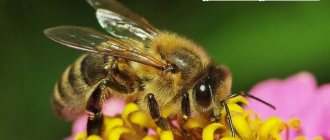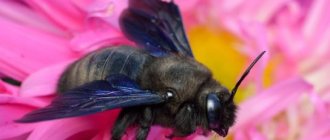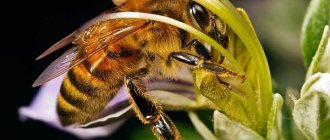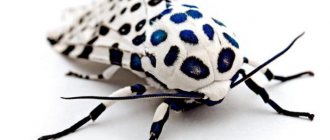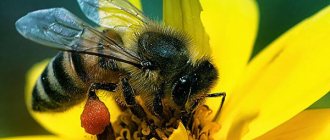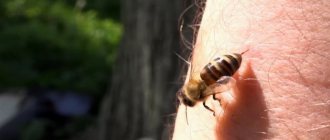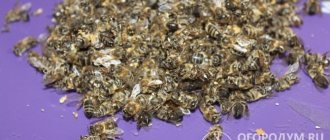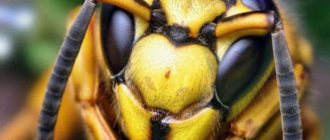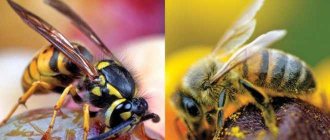The importance of bees in nature is difficult to assess: they are the main pollinators. Along with them, butterflies, flies, some beetles and mammals also perform this task, but their contribution is much less. Without bees, the life of most plants in their usual form will become impossible. Scientists are increasingly considering this scenario as insects begin to die out.
The importance of bees in nature and human life
If you ask any person what they associate hard work with, most will answer with bees! They are considered among the most hardworking living creatures on the planet, bringing great benefits to people! Bees pollinate not only flowering plants, but also agricultural ones.
In developed agronomic countries, farmers specifically plant apiaries on their plots, because thanks to bees you can get 15 times more harvest than without them.
Bees are unique insects also because they produce a lot of useful products for humans:
- bee bread and royal jelly;
- pollen and honey.
Bee venom is used in pharmaceuticals. Medicines and cosmetics for women are made from it.
Features of flower pollination
The most favorite flowers for bees are flowers of bright colors. For insects, this is a signal for the placement of nectar. Be sure to have a lot of purple, pink, orange and yellow flowers growing in the garden and near the apiary. These are not only chic garden decorations, but also wonderful honey plants.
Bees love flowers such as:
- Sunflower
- Chrysanthemum
- Snapdragon
- Begonia
- Gerbera
- Azalea
- Lavender
- Verbena
- Sage
- Petunia
It is also recommended to plant such fragrant flowers as daffodil, geranium, jasmine, and hyacinth. Bees neglect plants with red flowers and those that have no scent. These flowers are pollinated by butterflies.
In the table below you can see the basic principles of pollination of flowers and herbs by bees.
| Valerian officinalis | Pollinated during flowering period (July - early August) |
| Medicinal burnet | Pollinates in August. Honey obtained from the nectar of this plant is distinguished by its bactericidal properties. |
| Phacelia | One of the favorite plants of bees. From one hectare of this plant you can get up to 500 kg of honey. |
| Siberian buzulnik | This plant is actively used by bees for pollination and nectar. |
| Oregano and lemon balm | Attracts bees due to its specific smell |
| Medicinal black root | Often this plant is pollinated only by wild bees |
| borage | This plant begins to bloom in summer and is pollinated by insects even in the rains. |
| Khlopatnik | Because The flowering period of this plant is short; it is important that it is pollinated. The greatest amount of nectar is released in cloudy weather. |
If it were not for bees, the planet would not have the diversity of plants and flowers that constantly delights our eyes. That is why the loss of such insects will not only lead to the loss of honey, we will lose harvests of crops such as grapes, apples, pears and many others.
Bee animal or insect
First of all, you need to remember that bees have a biological classification according to which:
| Kingdom | Animals |
| Type | Arthropods |
| Class | Insects |
However, a bee is an insect that is studied by a specific science - apiology.
There are several important signs that prove that a bee is an insect:
- The body consists of three parts - the head with the abdomen and the torso.
- She has a mustache.
- They have compound eyes, like all insects.
- Several pairs of paws.
- There are wings.
Bee family composition
Beekeepers who purposefully breed apiaries must know the structure of a bee colony. Bees do not live alone; they can live and function normally only in a family. Basically, the bee family includes only honey worker bees and the queen bee, and in the summer they are also joined by drones.
In a bee colony there is only one queen bee, which gives birth to offspring. If for some reason she is no longer in the bee colony, she will all die out within 3 months.
Bee Extinction
Over the past decades, the population of wild bees has declined sharply. This is due to the use of toxic chemicals and pesticides. Substances used to control weeds and insects pose a danger to bees. Another problem is the growth of human-inhabited territories. This leaves pollinators with less food to eat. Experiments to create genetically modified plants also pose a threat to bees.
To appreciate the scale of the problem, just visit the mountainous Maoxian county in China. All wild bees have died out here. As a result, farmers have to pollinate apple trees by hand every year. This must be done within 5 days, otherwise there will be no harvest. During pollination, thousands of residents come to the gardens. They use homemade devices made from cigarette filters or chicken feathers as tools. In a day, 1 person can pollinate 5–10 apple trees.
Functions of a bee colony
It turns out that the bee family includes:
- Worker bees, which do everything that bees do: process pollen to produce other derivative products, feed the queen bee, guard the hive, etc.
- The queen bee only produces offspring. Each fertilized egg produces a female, and each unfertilized egg produces a male.
- Drones - they are necessary only for brood; they do not bring any other benefit to the bee colony.
Bees in Slavic mythology
“God's servant” was the name the Slavs called the bee, attributing wisdom and holiness to it. It was believed that sinners were destined to suffer from the sting, and only good people were capable of maintaining a swarm. There is a well-known sign about lightning, which does not harm hives. A folk legend tells of the appearance of shaggy creatures from the tears of a maiden sitting on a boulder in the middle of the sea.
The head of the family, the matka, is named after the Mother of God. People believed that the Mother of God gave protection to the owners of apiaries.
The benefits that insects bring are priceless. The downward population trend has prompted the creation of programs to support beekeeping. What feasible contribution can you make to help hardworking individuals? Protect the environment by not spraying crops at the time of flowering. Everyday human activities that destroy the natural environment and the use of chemicals in fertilizers lead to dire consequences.
Queen bee colony
As we have already mentioned, only one queen can live in one bee colony. She lives for 4-5 years, during which fertilized and unfertilized eggs are actively sown in the warm season. In winter, queen bees do not produce offspring.
Beekeepers have noticed that queens begin to produce several times fewer offspring after 2 years of their life. Therefore, after a couple of years, they change the queen in the bee colony.
The queen bee is always in the hive. She leaves him only 2 times in her entire life:
- The first time you need to do an initial inspection flyby.
- The second time is a nuptial flight for mating with drones (at least five).
Only the swarming queen bee can often fly out of the hive with the worker bees.
Human interaction
It is impossible to say that the bee was tamed by man. We only help them by providing proper care and housing. The bee colony does everything else on its own, without outside interference.
The inside of the home is sterile, so it is necessary to minimally limit access to the inside of the house and not disturb the created microclimate.
It is only necessary to inspect the nest occasionally to identify various factors such as disease and swarming. In such cases, you need to immediately intervene and take the necessary actions.
In the wild, insects independently protect their family from the development of diseases, but here you need to intervene in time during treatment, and sometimes during preventive treatment.
Modern veterinary medicine has created many remedies for the treatment of various diseases, the most common of which are:
- Varroatosis;
- Nosema;
- Toxicosis.
Remember that you must store sushi (previously drawn frames) correctly to prevent them from being destroyed by other parasites (wax moth). When maintaining an apiary, several requirements must be strictly met. They are not so complicated, but they will allow you to complete this or that work on time.
Don't forget - in order to get a tasty and healthy product on your table, you need to take a little care of these animals. Before starting an apiary, work for at least a year in the apiary of a beekeeper you know and learn all the intricacies of this science.
Stock up on the necessary tools. After creating your first hive, do not rush to install several more. To begin with, it is recommended to create no more than three families. Believe me, this will be enough to understand and learn how to manage animals and use their products.
Working honey bee, responsibilities and division
A worker bee is a female insect whose reproductive organs are undeveloped. They can mate with drones, but they do not produce offspring for the family. As an exception, a worker bee can become a queen if there is no queen bee in the bee colony. But only such a bee will produce drone offspring. For this reason, a worker bee can also be called a tinder .
This type of bees is divided into 2 groups:
- Young worker bees (from 3 days old) - their main function is to clean the hive. Sometimes they also process nectar.
- Older bees (from 10 days) - they do all the other work in the family (obtain nectar, process it, feed the queen, build honeycombs). These bees are divided into 3 more types:
- forager bees - they fly out to collect nectar and bring it to the hive;
- Receiver bees - accept nectar and place it in the lower honeycombs.
- Nurse bees - their main function is to produce nutrients (royal jelly) that the queen and larvae need (they feed on this jelly during the first 3 days of their life).
Bees: photo and description
True bees are a family of flying insects with more than 5 thousand species.
It is this family that includes honey bees, as well as bumblebees. In a broader sense, Bees are a group of stalked-bellied hymenopteran insects not related to (but related to) ants or wasps. In total, there are about 21 thousand species of bees, distributed throughout the world (with the exception of Antarctica).
Structure of a worker bee
All parts of the worker bee’s body are designed so that it is as well adapted as possible to perform its functions:
- The outer cover of the body is very elastic.
- There are 5 ordinary eyes on the head: 3 on the parietal part, 2 on the sides.
- Antennae extend from the head, which are the organs responsible for the bee’s sense of smell and touch.
- The oral apparatus contains a proboscis, 6.4 to 7.2 mm long, and jaws.
- There is a pharyngeal gland on the head that secretes royal jelly and the enzyme invertase.
- The bee has 4 wings, which are attached to the abdomen.
- 6 legs that attach to the chest. They have baskets and spurs, which are necessary so that the bee can collect pollen.
- In the abdomen there is a honey crop, where the bee collects nectar.
...but they have many diseases
Like all animals, bees get sick. They have their own infections, including viral ones (for example, Israeli acute paralysis virus), as well as various parasites. One of the most common bee diseases is varroatosis, caused by the parasitic mite Varroa destructor. It is believed that it is various diseases that cause the sad phenomenon of bee colony collapse syndrome, in which worker bees leave the hives en masse and do not return. Unfortunately, sometimes this happens for no apparent reason.
Alamy/Legion Media
Bee with Varroa destructor mite
Quality and skill of worker bees
The most important quality of bees is hard work. They work very hard to preserve the bee colony and reproduce.
The main skills that bees possess include:
- Pollination of plants.
- Making the most healthy sweet products for humans.
- Production of substances used in pharmacology.
But bees can be helped
The extinction of bees could lead to a reduction in the number of flowering plants, which will have no one to pollinate. But it also works the other way: the bees suffer due to a lack of flowers. One of the effective methods of restoring bee well-being is considered to be planting multicultural (that is, mixed-grass) meadows that will attract pollinators, as well as the creation of “insect hotels” - artificial shelters in which different species can settle. To support bees, you don’t have to have an apiary: you can limit yourself to a small house, similar to a birdhouse. The bees will be grateful.
Why are bees dying?
Ideally, good beekeepers have bees that survive the winter well. But there are times when they die.
This happens for the following reasons:
- They don't have enough food because beekeepers take all the honey and pollen.
- Poor ventilation in the hive, which causes the bee's nest to become damp.
- Disease of the bee colony - Varroatosis (mite infestation).
- Mice. These rodents can even get into the hive, but the bees cannot escape from them because they are attached to the tuber.
- Finding an apiary in a noisy area. Any noise (car sounds, for example) disturbs the bee colony and causes anxiety, which negatively affects the health of the bees. They weaken and may simply not survive the winter.
- Sudden changes in temperature. If it suddenly gets warmer, the queen will decide that she can lay eggs, and if she does this and cold weather sets in, then the entire exhausted bee colony will die.
Where do bees collect pollen?
There is no special sac on the insect’s body for collecting pollen. Therefore, they collect pollen with their whole body, or more precisely, with its villi. Plant pollen collected by the bee is stored in a basket on its hind legs. The result is a ball that has different shades depending on the honey plant: from yellow to black. Field bees spend up to two hours of their time per day collecting pollen.
Important! When a bee flies into the hive after flying around flowers, she carries a weight equal to her own.
Only bad weather can stop the collection of pollen and nectar. At this time, pollinators are in the hives.
Pollen collection
The pollen collection process itself consists of several stages:
- The bee, with the help of a scout, looks for fragrant and attractive honey plants.
- Sitting on the selected flower, the insect collects pollen on all the fibers.
- The product is collected on the legs, body, and wings.
- The insect carefully combs its paws, collecting prey from all the fibers.
- Then he forms a ball and lowers it into the basket on the shins of his hind legs.
Who are tinder bees and why are they dangerous?
To create one ball you need to fly around a thousand flowers. Then the toiler flies to the hive with her prey. Here she drops pollen into the cells. This happens with the help of special spurs, which are located on the middle legs. Next, the pollen is processed.
Disposal and recycling of pollen
After dumping pollen into cells that are located closer to the brood, the bees begin processing it. This is the work of insects that do not fly out of the hive. Young insects process pollen.
- Loosen lumps of pollen with their jaws.
- Moistened with nectar and saliva of the glands.
- Compact with heads.
- Pour honey over the fermented pollen.
- Seal with wax.
In this form, the pollen is stored for six months or even more. When pollen is densely packed, lactic acid fermentation processes take place in it. Lactic acid, which is produced as a result of this process, is a natural preservative and protects bee bread from spoilage.
All spring and summer, pollinators collect and store pollen so that there is enough food for a safe winter and for feeding the brood. If less than 18 kg of pollen is collected in a year, the bee colony will be on the verge of death and may not survive the winter.
How bees transfer pollen from flower to flower
In order to collect 20 mg of pollen, an insect flies around a thousand honey plants. At the same time, bees pollinate flowers. Pollen is male reproductive cells. If the plants are monoecious, then male cells must be transported to female flowers for fertilization to occur.
When collecting nectar and pollen, the insect flies from flower to flower. Some of the collected pollen from the insect's villi remains in the flower. This is how bees pollinate plants. Thus, insects play a huge role in the reproduction of honey plants. Most wild and cultivated plants require pollination by bees.
What do bees pollinate?
Among honey plants there are hundreds of different flowers, shrubs and trees. Bees pollinate:
- many shrubs: hawthorn, currant, raspberry, wild rosemary, heather, barberry, gooseberry;
- fruit and ordinary trees: apricot, apple, pear, acacia, cherry, oak, chestnut, maple, bird cherry, birch, plum, linden;
- herbaceous plants: clover, watermelon, cornflower, coltsfoot, thyme, lungwort, basil, alfalfa, fireweed.
Many vegetables in gardens and greenhouses are also pollinated by insects. These include: cucumbers, onions, pumpkin, some varieties of tomatoes, peppers and eggplants.
Important! Scout bees select honey plants based on color and the sugar content in the nectar.
How to Attract Bees to a Greenhouse for Pollination
Attracting bees to the greenhouse is important if there are crops there that need cross-pollination. There are several tips to attract bees to your greenhouse:
- plant flowers in a greenhouse;
- provide unimpeded access for bees to collect pollen;
- place an apiary not far from the greenhouse;
- use various baits;
- completely neutralize foreign odors.
You can attract bees to a greenhouse using a whole range of such measures. First of all, it is important that insects have access to the inside of the greenhouse. To do this, the greenhouse is equipped with the maximum number of doors and vents, which are opened in hot weather suitable for pollination.
It is also recommended to plant sunflower, jasmine or petunias in the greenhouse as attractive plants.
It’s great if there is an apiary next to the greenhouse.
Attention! When the apiary is moved 100 m away, the greenhouse attendance drops by almost 4%!
The following substances are used as bait:
- sugar syrup with the aroma of the necessary flowers, in which case pollinators will fly precisely to this smell;
- make feeders for bees with sugar syrup and move them to the greenhouse;
- use aromatic oils to attract insects: mint or anise.
Choosing beekeeping wire and how to stretch it onto frames
When using feeders, it is not necessary to keep them in the greenhouse all the time; you can take them out for a while. But it is not recommended to place feeders further than 700 m from the greenhouse.
How to attract bees to cucumbers
Attracting bees to pollinate cucumbers is not difficult. The vegetable can grow both in a greenhouse and in open ground. You can attract bees to the greenhouse to collect nectar if you spray all the cucumbers with a special solution. The recipe is simple:
Mix 1 liter of water at room temperature with a large spoon of jam or honey. Add 0.1 g of boric acid. After spraying, the bees will fly to the scent and pollinate the cucumbers in the home greenhouse.
In early spring, you can place a bee colony in a greenhouse with cucumbers. To do this, it is necessary to place the hive on the side rail of the greenhouse at a height of 40 cm. In a glass greenhouse, it is recommended to darken the windows behind the hive using fabric or a sheet of cardboard or plywood.
Bees will die, people will die, why do they say that?
Researchers are confident that people need bees almost as much as they need air. According to them, if bees disappear from the face of the Earth, then within 4 years the human race will also die out, because there will be no one to provide people with uninterrupted food.
Let's analyze the chain of events that can happen:
- First, plants that will remain without pollination will begin to die.
- As a result, the animals will die, because they will simply have nothing to eat.
- When there are no more plants or animals, man will be left without food and will eventually die of starvation.
To prevent all this from happening, we urgently need to start taking care of nature! Any interference with natural processes on Earth leads to disastrous consequences, and bees are no exception.
Bees should not be considered individual organisms
Honeybees are such social animals that their colonies can be called superorganisms, and an individual bee cannot survive outside its family. The bee community is strictly hierarchical, each individual performs its own function in it: in the hive there is a queen, worker bees (they are divided into hive bees, which serve the bee “house”, and flying bees, which make supplies) and drones. The following figures will allow you to estimate the scale of the bee superorganism: a working honey bee weighs 0.1 grams, and the average bee swarm weighs 6-8 kilograms.
Peter Macdiarmid/Getty Images

